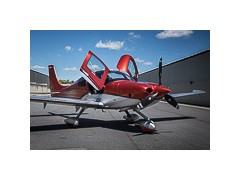An instrument rating isn't a license, but rather an add-on to an existing Private or Commercial Pilot Certificate. It allows you to act as PIC (Pilot In Command) of an airplane during IFR conditions (inside clouds, low visibility, etc.) as well as in Class A airspace. Instrument training centers around becoming proficient at flight solely by reference to instruments, and also includes more in-depth study of weather and rules and procedures that apply during IFR conditions.
Obtaining an instrument rating requires dedication and effort, but the payoff is tremendous. As an instrument-rated pilot, it's much more likely that you'll be able to complete a planned flight because weather conditions are less of a factor. There are specific criteria that must be met in order to be eligible for an insrument rating. The FAA details them in CFR §61.65, but here's the shorter version:
Prerequisite: Private or Commercial License
Age: 17 Years
Total Flight Time: 50 Hours PIC
Simulated or Actual Instrument Flight Time: 40 Hours
Instrument Instruction Flight Time: 15 Hours
FAA Written Test
FAA Practical Test (Checkride)














